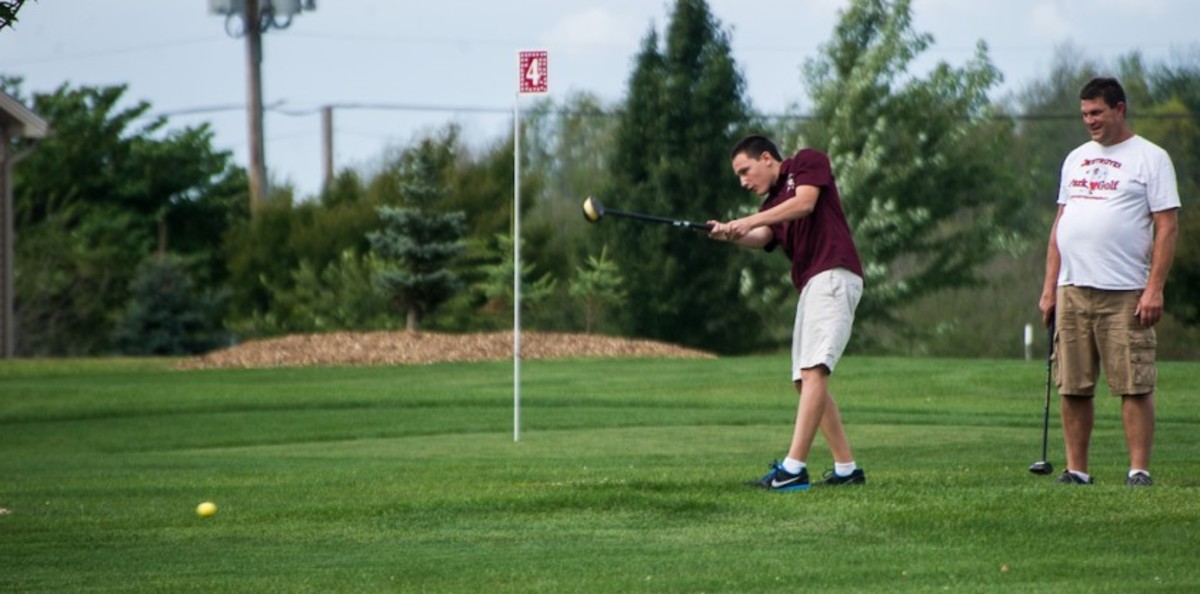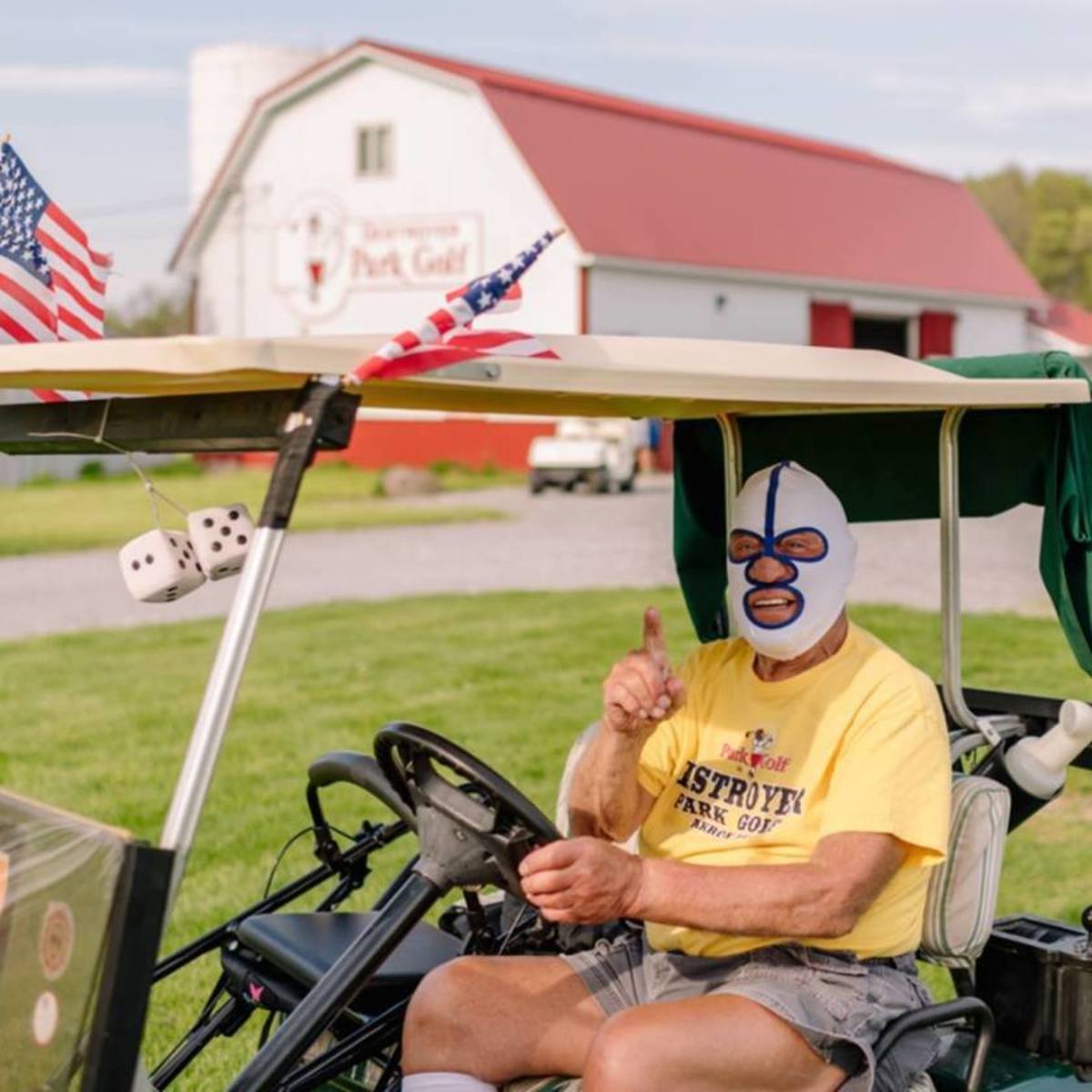Japan's Park Golf finds first home in America

As an annual rite of passage, Joey Leonard makes the six-hour pilgrimage to Akron, N.Y., sometimes as many as three times a year.
A Milan, Mich. resident, the 53-year-old Leonard just can’t get enough of Park Golf.
"I’ve always loved golf, but I just fell in love with Park Golf,” Leonard said. “I think it’s the greatest game known to man."
What could possess someone to drive to a small rustic town, population hovering around 2,800 souls, 40 minutes outside of Buffalo? For starters, that’s where Destroyer Park Golf is located. It’s unique because the 18-hole layout is the only Park Golf facility in the U.S.
A hybrid between golf and croquet, the game was invented in 1983 in Makubetso, Hokkaido, Japan by elder golfers still passionate about playing but finding the rigors of 18 holes to be too physically taxing. They wanted to create a relaxed atmosphere and simplify the game for all ages.
Today the game is hugely popular in Japan, Korea and Thailand, and has a strong following in Brazil, Denmark and Sweden. There are more than 1,300 courses in Japan alone.

In a nutshell, Park Golf follows the same tenants of golf, except for the fact that just one club is needed, play is substantially faster and the course is drastically smaller. The ball rarely, if ever, travels higher than the waist.
According to rules by the Japan Park Golf Association (JPGA), now known as the International Park Golf Associations, a nine-hole course can only be 500 meters (a little more than 500 yards), and no par 5 can exceed about 110 yards.
Equipment and courses are sanctioned by the JPGA, which is similar to the U.S. Golf Association as a governing body. Balls are bigger than their normal-sized dimpled counterparts. (think the size of a billiards cue ball). Consequently, the holes are bigger, too, at 8 inches. The club, a cross between a driver and a mallet, can’t have any loft. There are also angle and height restrictions.
“The game is basically croquet on steroids,” said Gary Livesay of USA Grass Golf, a portable variation of Park Golf. Livesay has plans to sell inventory (clubs, balls, flagsticks, holes) that would assist anyone wanting to set up courses on large tracts of land in parks or even back yards.
In the case of Destroyer Park Golf, it’s a stationary par-66, 18-hole course owned and maintained by married couple, Kris Beyer and Chris Jones. So, pray tell, how in the world’s wasabi did Park Golf land 5,954 miles away from Japan and smack dab on Americana backroads?
By happenstance.
Beyer’s father, pro wrestling hall-of-famer Dick "The Destroyer" Beyer, appeared in Japan countless times over his career. His popularity there heightened during the 1960s and ‘70s to Hulk Hogan-esque levels of the 1980s.
“The Destroyer” also loved to golf often took his clubs on visits. Naturally, over the years, he made friends there.
“So one day, while he was in Japan, a friend said to him, ‘Today we’re going to go play Park Golf,’” said Kris Beyer. “My dad didn’t know what to think. When they went to the Park Golf course, my dad fell in love. He was about 70 at the time. But he thought Park Golf could be really big in the U.S. and his dream was to open up a Park Golf course.”
After careful deliberation, Kris Beyer and her then-fiancé decided to bring the dream to fruition.
“I’m one of those souls who said, ‘I don’t want to be 65 years old and wished I had,’ so I said to my fiancé at the time, ‘This is what this is. Do you want to give it a try?’” said Kris Beyer, who has a degree in electrical engineering and masters in exercise science. “We also did it so my father wouldn’t get old.”
It helped that Chris Jones had run Akron-based Dande Farms Golf Course before meeting Kris Beyer, so it wasn’t as though they were rummaging into the unknown. The two contacted the Japan Park Golf Association for guidance. Communication went back and forth as drawings were submitted to the JPGA. The couple wanted to be sure they met JPGA regulations, which eventually led to the course being certified. A small delegation from the JPGA also attended the grand opening in 2013.
As it took off, Dick Beyer, fully retired from wrestling and coaching high school swimming, could be seen on the grounds.
“He’d be out front with his mask on, in a golf cart and if they had tournaments he would drive around talking to people,” said Akron resident Jeff Cheavacci, who serves on Destroyer Park Golf’s committee that communicates with the Japan Park Golf Association.
Up until his death last March at 88, Kris Beyer said, Dick Beyer loved being at the course. His memory lives on. A photo of Beyer with Andre the Giant is ensconced within the entranceway and a museum featuring his wrestling memorabilia are on-site.
That said, open between April and October, the business has taken off. Beyer and Jones are heavily involved in the community, behind myriad promotions and hosting fundraisers. Bottom line: word of mouth generally helps sell the sport.
A round costs a meager $10 and takes about 90 minutes depending on skill, of course.
“I always say,” said Cheavacci, "a family of four costs $40 to play Park Golf. To go to McDonald’s, that family of four is going to cost close to $40 … I think it’s cheap to play. I almost think it’s too cheap. If I go play golf around here and get a cart, it’s definitely a $40 or $50 bill for myself and maybe another person.”
Cheavacci, who has played “a zillion” rounds, loves the game but also for another reason.
“I have a handicapped son who is autistic and he can do it," he said. "He can’t go out on a public golf course and do it, but kids with special needs, they have them out there all the time. It helps that the club is bigger, the ball is bigger and the hole bigger.”
Like anything new, selling the sport initially had challenges.
Said Kris Beyer: “We have fought, and are winning, the battle with traditional golfers. They look at it and say, ‘It’s just like putt-putt,’ until they get out there and have to get the ball in the hole. Once we get them out to try it, they’re sold.”
Like regular golf, execution requires a deft touch and feel for each shot. Since it’s difficult to get the ball higher than 3 feet, said Livesay, dogleg holes can’t easily be cut.

Destroyer Park Golf plays differently almost every round because Jones keeps the layout manicured, fertilized, landscaped and changes the holes from time to time. Arid and wet conditions can also impact how the ball rolls.
“The first time I played park golf, I shot 200,” said Leonard, an avid golfer until Park Golf. “I’m like, ‘OK, this is on.’ I got better as I went along.”
Leonard now averages between 12-13 shots under par, cramming in anywhere from six to 12 rounds per day when he’s in Akron, or as many as 20 in a weekend.
For Livesay, he’s hoping his products take off. He’s banking that USA Grass Golf, the portable offshoot of Park Golf, will find its niche. After he retired from the wood blinds and shutters industry, he traveled to Asia and became smitten with Park Golf. Having no interest in running a Park Golf course, he turned his attention to manufacturing the equipment to play, although it’s not sanctioned by the JPGA.
The $4,500 cost to set up a nine-hole USA Grass Golf course includes clubs, portable hole, flagstick, standard 5-foot fiberglass flagstick and flag, and balls.
Everyone involved believes the time is right for Park Golf to explode.
“We want it to take off,” said Kris Beyer, who added that she and her husband have been contacted by several entrepreneurs interested in developing the game, from Oregon to Texas to Ohio. Additionally, another Akron golf course was contemplating whether to extend its land to construct a Park Golf design.
For now, Leonard will have to settle for the six-hour drives. Just if he can get in some of his 40-50 rounds per year.
“For people who like to see their score under par,” said Leonard, “and you have to work at it, it’s a game that will make your heart feel good.”
